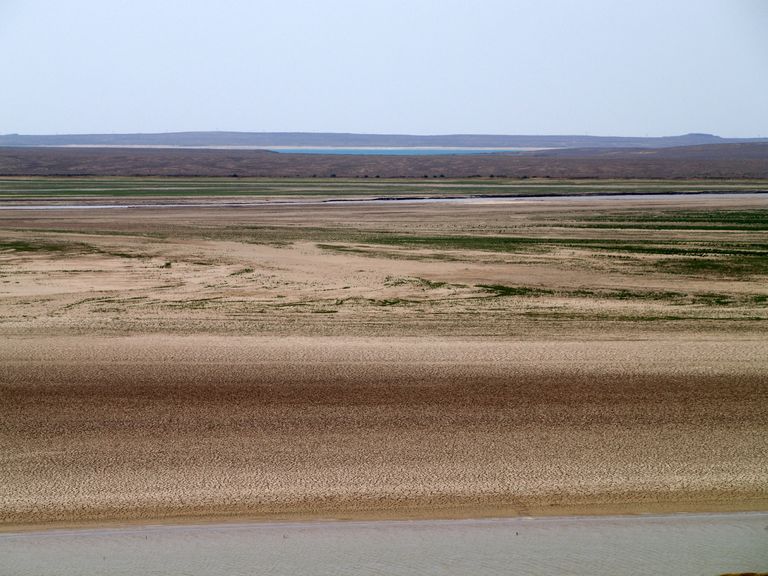Project Detail: The desert of red sands
Contest:
Swiss Storytelling Photo Grant 9th
Brand:
LuganoPhotoDays
Author:
Claire Freedman
Project Info
The desert of red sands
The most important part of Uzbekistan is composed of o desert, the desert of red sands. In this desert , a lot of popuation still lives there, particulary the Kazaks who keep their traditions.
REPORTAGE : Uzbekistan, the desert of red sands
From Uzbekistan (in Central Asia) , we mostly know about the wonders of cities like Samarkand and Bukhara. Yet two-thirds of the country consists of a desert, the red sand desert called Kyzil Kum.
This desert is at the heart of Uzbekistan, bordered on one side by the Amu Darya, a river known in antiquity as the Oxus, which Alexander the Great once crossed. This river, the largest in Central Asia, actually divides two deserts: the Kyzil Kum desert and the Karakum desert (of black sands) located in Turkmenistan.
The other side of the desert is also bordered by another large river, the Syr Darya, which, like its big brother, flows into the Aral Sea.
Kyzil Kum is made up of high plateaux and hills with a mix of gravel and sand dunes, covering an area of 298,000 km², placing it among the world's largest deserts. Ella Maillard, the famous travel writer, crossed it in 1920 and wrote a book with the same name.
The desert gets its name from its yellow and reddish color, with sand covering much of its area. Here and there, small granite, clayish shale, and limestone outcrops emerge, from which a few scarce waters flow to quench livestock.
The terrain is hostile due to extreme temperatures. The climate conditions are harsh, exacerbated by the shrinking of the Aral Sea. In summer, temperatures can reach 54°C and in winter, they range between -20°C and -30°C with violent winds causing sandstorms. With such heat, one experiences a mirage-like sensation. Rain is rare, averaging 150mm/year. Water sometimes remains in depressed areas, clayey cavities called takyrs, which then take on a cracked appearance during droughts.
One feels the vastness of the world's end, the endless horizons of a place where time seems to have stopped. There are often contradictory feelings: a sense of solitude and also freedom, fragility and desert's strength. Ocher-colored lands stretch as far as the eye can see, with soft shaded effects. One can spot flocks of Astrakhan sheep and goats looking for some food in the scorched grass and shepherds on foot or horseback traversing these vast spaces.
For the desert is inhabited. Nomads have lived in these landscapes and this hostile environment for centuries, descendants of the Scythians: the Kazakhs.
For generations, the Kazakhs have adapted to this challenging environment. They are proud to preserve their culture and traditions. However, some still live in the middle of the desert, raising their livestock. They have retained Mongol features with very weathered skin. The heat and dryness cause the skin to wrinkle prematurely. Thus, women often look older than they are. They marry very young. They wear colorful clothes with scarves tied at the back of their necks.
Kazakhs form multi-generational family communities. Each member has a role; men tend to livestock, while women handle milking, childcare, and household duties. Typically, three generations live together. The daughter-in-law lives with her in-laws and takes care of household chores. She also milks the camels very early in the morning. For special occasions, they prepare the traditional dish, plov, made of rice and lamb slowly simmered with herbs, very flavorful.
Although Muslim, they still retain practices from shamanism, celebrating ancestors and nature spirits, and consulting shamans during important life moments.
The Kazakhs are breeders; they have herds of goats as well as Bactrian camels and dromedaries. The Bactrian camel is an amazing animal. Every winter, it wraps itself up with a brown fur. As soon as spring comes, it loses this coat until it becomes bald ;
They live in yurts made of wool felt and wood, beautifully decorated inside with carpets, door curtains, and tapestries, arranged in symbolic representations of the cosmos. They sleep on thin, brightly colored mattresses layered on the floor for desired comfort. In reality, they are semi-nomadic: in winter, they live in more comfortable solid houses in villages. As soon as the warm season arrives, they move into the yurts.
The modern world is encroaching. There aren't many horses left, only shepherds use them for long distances. They now use Soviet-type motorcycles, and mobile phones. They now use Soviet-type motorcycles, and mobile phones have been introduced. However, they retain some traditions; in the evenings, they like to gather to sing love songs or songs recounting the glorious past of the nomads, accompanied by string instruments.
To maintain their way of life, they welcome a small number of travelers and tourists whenever the weather allows. But this nomadic life is at risk, faced with the temptations of modernity and today's comfort.


















